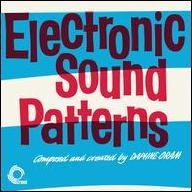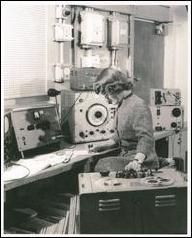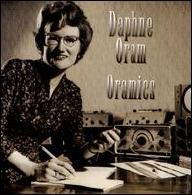For close to a decade Oram remained in the background both literally and figuratively, given few assignments beyond creating aural backdrops for myriad BBC productions. In 1957 she was commissioned to score the radio drama Amphytryon 38. Employing a sine wave oscillator, tape recorders, and a handful of homemade filters, she created the first wholly synthetic score in BBC history, so impressing network brass that they finally agreed to finance a new facility devoted to producing electronic content. The BBC Radiophonic Workshop opened in 1958 in the BBC's London studio Maida Vale. While Oram was installed as director, co-founder and fellow Beeb engineer and composer Desmond Briscoe (fresh off his own success scoring Samuel Beckett's "All That Fall") was named manager. While the BBC Radiophonic Workshop initially focused on experimental drama and so-called "radophonic poems," creating effects from the sci-fi serial Quatermass and the Pit as well as the hugely popular comedy showcase The Goon Show, its pioneering tape-manipulation techniques would become commonplace in sound editing facilities across the globe, and its evocative sonic palette (typified by Delia Derbyshire's landmark electronic interpretation of the theme to #Doctor Who) remains a primal inspiration for successive generations of DJs, producers, and programmers.
But Oram's tenure at the workshop proved brief. In early 1959, she resigned from the BBC, frustrated by the network's continued refusal to push electronic music into the foreground. Settling into Tower Folly, a converted oast house in Kent, she assembled her own studio and continued preliminary work on what is now known as Oramics, a system she began developing while still at the BBC. Similar in concept to Yevgeny Sholpo's Variophone optical synthesizer, the Oramics synthesizer encompasses a large, rectangular metal frame upon which pass ten synchronized strips of clear sprocketed 35mm film. Shapes and designs etched into the filmstrips are then read by photo-electric cells and transformed into sounds. Because the output was monophonic, multi-track tapes were required to create polyphonic textures. The flexibility of control over the nuances of sound production afforded by the relationship between graphics and audio signals nevertheless positioned Oramics as a viable and innovative approach to electronic music production, however, and Oram continued refining her principles across a series of installations and exhibitions. In 1961, she collaborated with film composer Georges Auric to score the Deborah Kerr horror feature #The Innocents, and a year later completed her first LP, Electronic Sound Patterns, in addition to writing advertising jingles for brands including Nestea.
Oram's most significant work during the 1960s was created in collaboration with composer Thea Musgrave, most notably the pioneering Four Aspects, a tape composition that in approach and atmosphere uncannily anticipates by 15 years Brian Eno's ambient masterpiece Discreet Music. Musgrave later assisted Oram's tape contributions to the 1969 ballet +Beauty and the Beast as well as the compositions Soliloquy and From One to Another I, each written for solo instrument and tape (guitar and viola, respectively). A substantial grant from the Calouste Gulbenkian Foundation eventually enabled Oram to walk away from her commercial commitments, and within a few years of publishing her profoundly metaphysical 1972 book -An Individual Note of Music, Sound and Electronics, she even abandoned composition to devote all of her focus to advancing Oramics. She was quick to embrace computer technology, acquiring an Apple II computer in 1981 and with the assistance of programmer Steve Brett devising a simple digital equivalent to the Oramics hardware; six years later, she moved to the new Acorn Archimedes, teaching herself assembly language in the process. Between 1982 and 1989, Oram also taught weekly electronic music classes at Canterbury's Christ Church College. She suffered several debilitating strokes during the mid-'90s, and was forced to move into a nursing home. Oram died in relative anonymity on January 5, 2003, less than a week after her 78th birthday; as of this writing, the majority of her music remains unavailable. ~ Jason Ankeny, Rovi
|
1
|
|
Four Aspects |
|
2
|
|
Snow |
|
3
|
|
Rotolock |



















